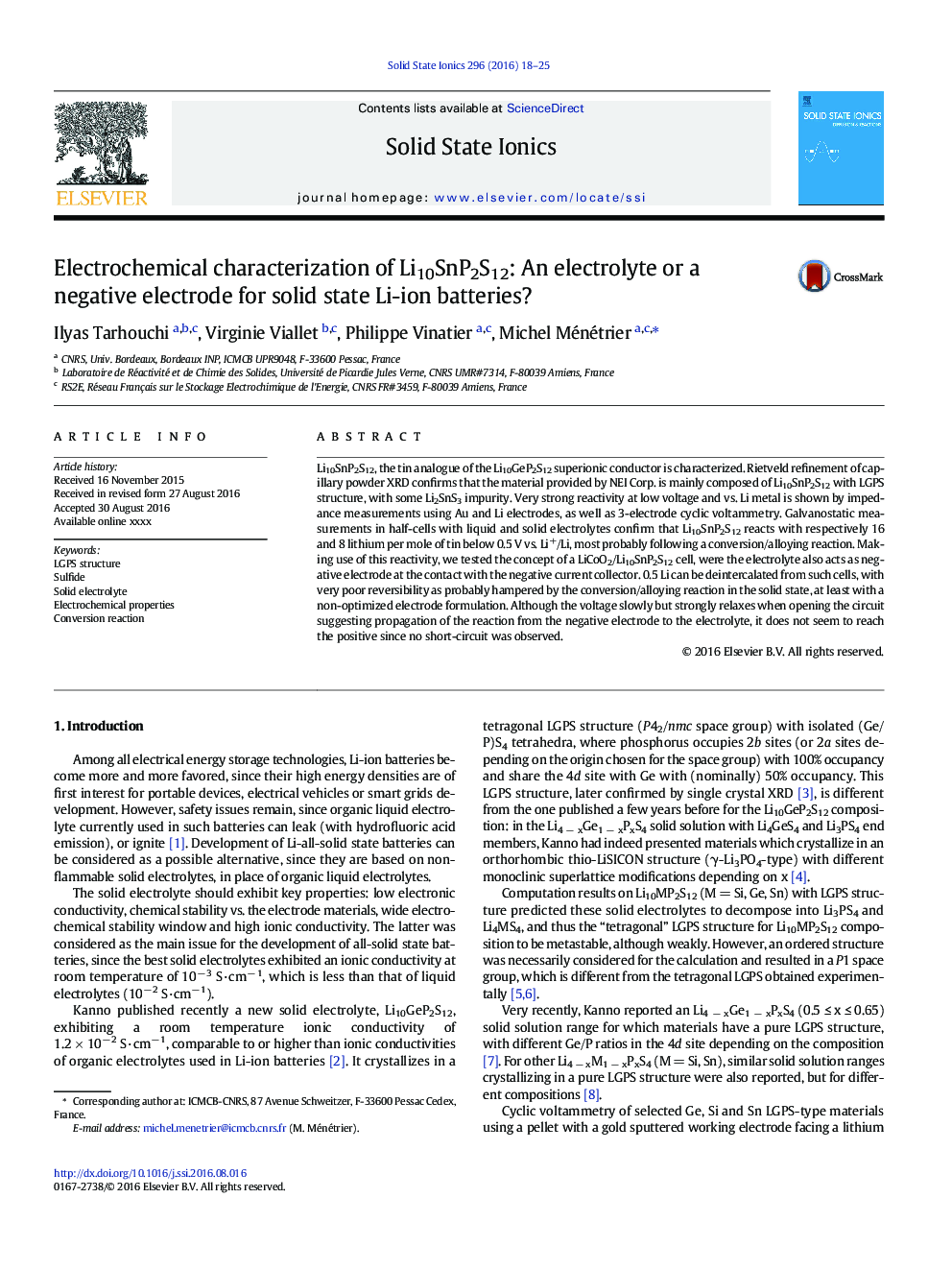| Article ID | Journal | Published Year | Pages | File Type |
|---|---|---|---|---|
| 7744882 | Solid State Ionics | 2016 | 8 Pages |
Abstract
Li10SnP2S12, the tin analogue of the Li10GeP2S12 superionic conductor is characterized. Rietveld refinement of capillary powder XRD confirms that the material provided by NEI Corp. is mainly composed of Li10SnP2S12 with LGPS structure, with some Li2SnS3 impurity. Very strong reactivity at low voltage and vs. Li metal is shown by impedance measurements using Au and Li electrodes, as well as 3-electrode cyclic voltammetry. Galvanostatic measurements in half-cells with liquid and solid electrolytes confirm that Li10SnP2S12 reacts with respectively 16 and 8 lithium per mole of tin below 0.5Â V vs. Li+/Li, most probably following a conversion/alloying reaction. Making use of this reactivity, we tested the concept of a LiCoO2/Li10SnP2S12 cell, were the electrolyte also acts as negative electrode at the contact with the negative current collector. 0.5 Li can be deintercalated from such cells, with very poor reversibility as probably hampered by the conversion/alloying reaction in the solid state, at least with a non-optimized electrode formulation. Although the voltage slowly but strongly relaxes when opening the circuit suggesting propagation of the reaction from the negative electrode to the electrolyte, it does not seem to reach the positive since no short-circuit was observed.
Related Topics
Physical Sciences and Engineering
Chemistry
Electrochemistry
Authors
Ilyas Tarhouchi, Virginie Viallet, Philippe Vinatier, Michel Ménétrier,
